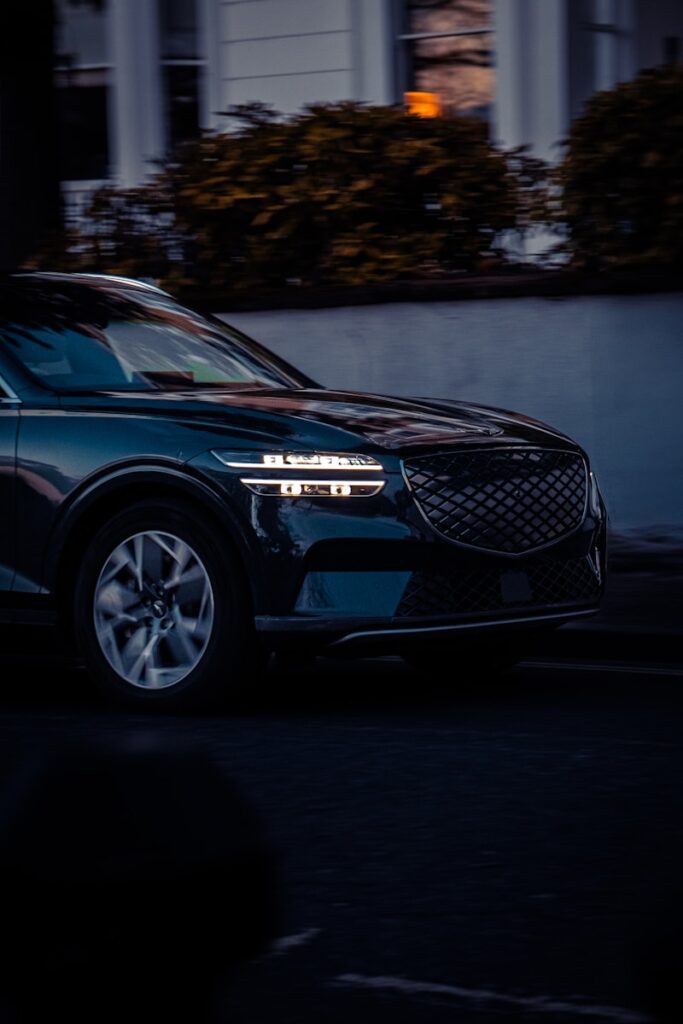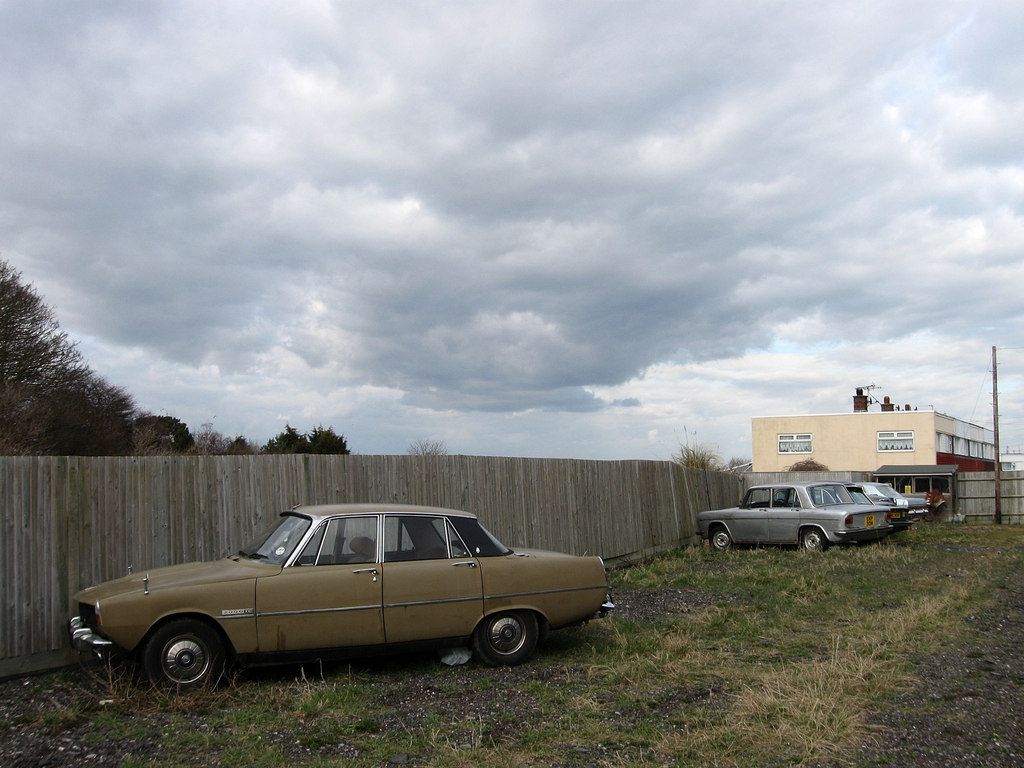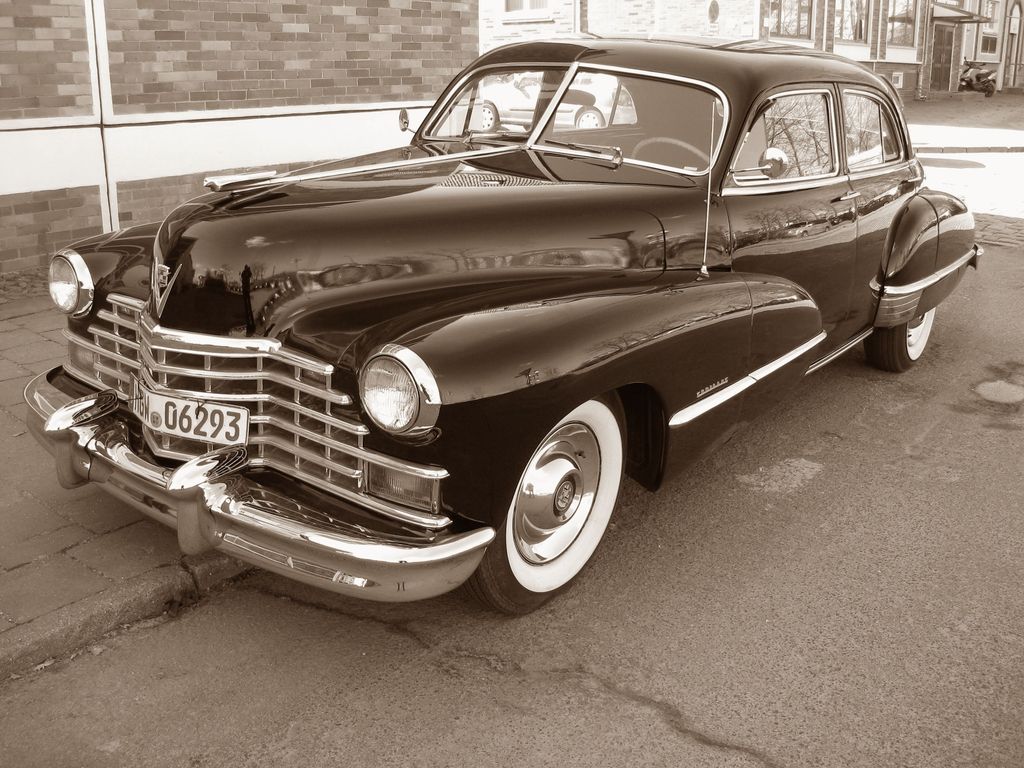
Most of us fall in love with cars long before we can truly afford them, or before life’s practicalities demand something far more sensible. The early years are often a balancing act: school, work, building a family, and navigating tight budgets. Throughout it all, the dream car often remains just that—a cherished aspiration tucked away for a distant future. But what happens when that future arrives, when the sacrifices have paid off, and the opportunity to turn a long-standing wish into reality finally presents itself?
For the seasoned enthusiast or the newly empowered collector, the goal shifts from mere acquisition to making a truly informed decision. This isn’t just about buying any cool car; it’s about investing wisely in a vehicle that ignites your passion, delivers undeniable driving pleasure, and ideally, holds or even increases its market value. The world of classic cars is a dynamic landscape, where certain models have transcended their original purpose to become coveted assets, some now commanding prices ten times their initial cost. It’s a market driven by rarity, condition, restoration quality, and, crucially, demand among discerning collectors.
Our focus today is on those exceptional classics that don’t just offer a blast from the past but also represent a prudent investment. Every car on our meticulously curated list had to meet a rigorous set of criteria: it must be at least 20 years old, proving its enduring appeal and classic status. It must show clear evidence of real or rising collector interest, distinguishing it from fleeting trends. Critically, these vehicles need to be reasonably reliable by vintage standards, supported by accessible parts, ensuring that the “cost of living” with them—repairs, maintenance, and opportunity loss—remains manageable. And, perhaps most importantly, each car must evoke that involuntary grin every time you turn the key and hit the open road. These are the classics that promise big smiles without demanding a second mortgage, delivering on the promise of “Old, But Gold.”
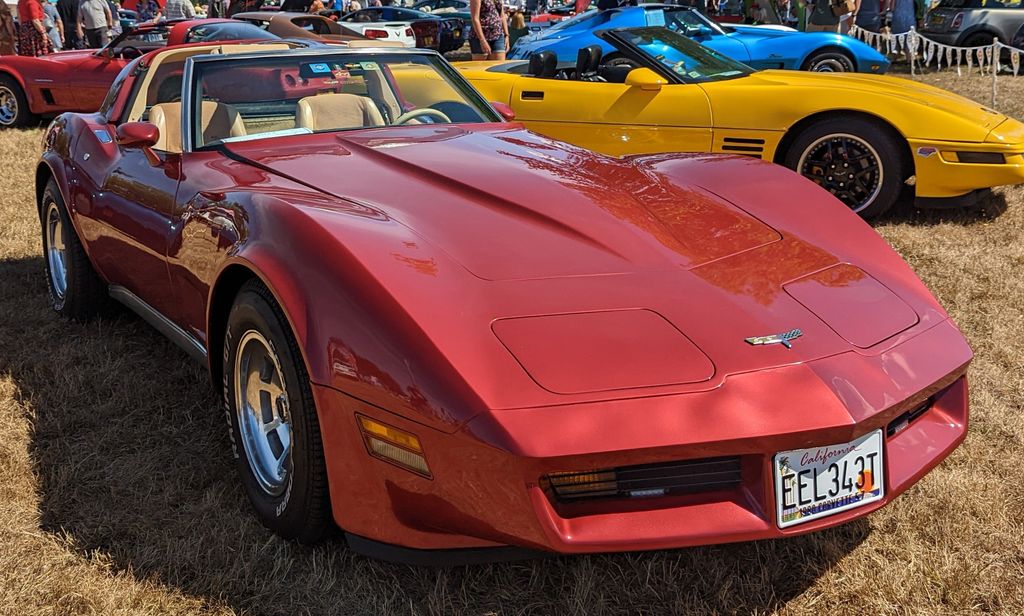
1. **1978–1982 Chevrolet Corvette (C3, Later Years)**The late C3 Corvette often finds itself unjustly overshadowed, typically by its revered chrome-bumpered predecessors from earlier in the generation. However, to overlook these later models would be a significant misstep for any aspiring classic car owner. While the earliest C3s might be climbing rapidly out of reach for many, the later C3s—particularly those produced between 1978 and 1982—offer a compelling blend of serious style, unmistakable V8 charm, and that iconic long-hood, coke-bottle profile, all without the prohibitive financial entry point.
The 1978 refresh marked a pivotal moment for the C3, introducing the dramatic fastback glass hatch that instantly modernized its silhouette. Further styling tweaks in the early 1980s contributed to a wide, low-slung presence that still evokes the spirit of classic late-night car chases and an era defined by unbridled automotive freedom. While it’s true that horsepower figures saw a decline during this period due to evolving emissions regulations, the raw, visceral torque remained a defining characteristic, and the small-block V8 rumble is, without question, profoundly authentic. Factor in the sheer enjoyment provided by its removable T-tops, and the driving experience becomes even more engaging and undeniably fun.
Why it’s worth it: This iteration of the C3 Corvette stands out as one of the most accessible avenues into classic Corvette ownership. The aftermarket support is extraordinarily robust, with parts readily available, ensuring that maintenance and personalization are straightforward endeavors. Visually, it carries the gravitas of a six-figure car, yet it remains attainable within a budget of $12,000–$18,000, making it an incredible value proposition for a V8 icon that still possesses an undeniable ability to “strut” and captivate.
Car Model Information: 2023 Chevrolet Corvette 3LZ
Name: Chevrolet Corvette
Caption: 2021 Chevrolet Corvette C8
Manufacturer: Chevrolet
Production: 1953–present
ModelYears: bulleted list
Assembly: bulleted list
Class: Sports car
BodyStyle: coupé
Layout: Front-engine, rear-wheel-drive layout,Rear mid-engine, rear-wheel-drive layout
Categories: 1950s cars, 1960s cars, 1970s cars, 1980s cars, 1990s cars
Summary: The Chevrolet Corvette is a line of American two-door, two-seater sports cars manufactured and marketed by General Motors under the Chevrolet marque since 1953. Throughout eight generations, indicated sequentially as C1 to C8, the Corvette is noted for its performance, distinctive styling, lightweight fiberglass or composite bodywork, and competitive pricing. The Corvette has had domestic mass-produced two-seater competitors fielded by American Motors, Ford, and Chrysler; it is the only one continuously produced by a United States auto manufacturer. It serves as Chevrolet’s halo car.
In 1953, GM executives accepted a suggestion by Myron Scott, then the assistant director of the Public Relations department, to name the company’s new sports car after the corvette, a small, maneuverable warship. Initially, a relatively modest, lightweight 6‑cylinder convertible, subsequent introductions of V8 engines, competitive chassis innovations, and rear mid-engined layout have gradually moved the Corvette upmarket into the supercar class. In 1963, the second generation was introduced in coupe and convertible styles. The first three Corvette generations (1953–1982) employed body-on-frame construction, and since the C4 generation, introduced in 1983 as an early 1984 model, Corvettes have used GM’s unibody Y‑body platform. All Corvettes used front mid-engine configuration for seven generations, through 2019, and transitioned to a rear mid-engined layout with the C8 generation.
Initially manufactured in Flint, Michigan, and St. Louis, Missouri, the Corvette has been produced in Bowling Green, Kentucky, since 1981, which is also the location of the National Corvette Museum. The Corvette has become widely known as “America’s Sports Car.” Automotive News wrote that after being featured in the early 1960s television show Route 66, “the Corvette became synonymous with freedom and adventure,” ultimately becoming both “the most successful concept car in history and the most popular sports car in history.”
Get more information about: Chevrolet Corvette
Buying a high-performing used car >>>
Brand: Chevrolet Model: Corvette
Price: Not Priced Mileage: 1,614 mi.
Read more about: A Car Expert’s Deep Dive: 12 Classic Cars That Offer Exceptional Value and Investment Potential
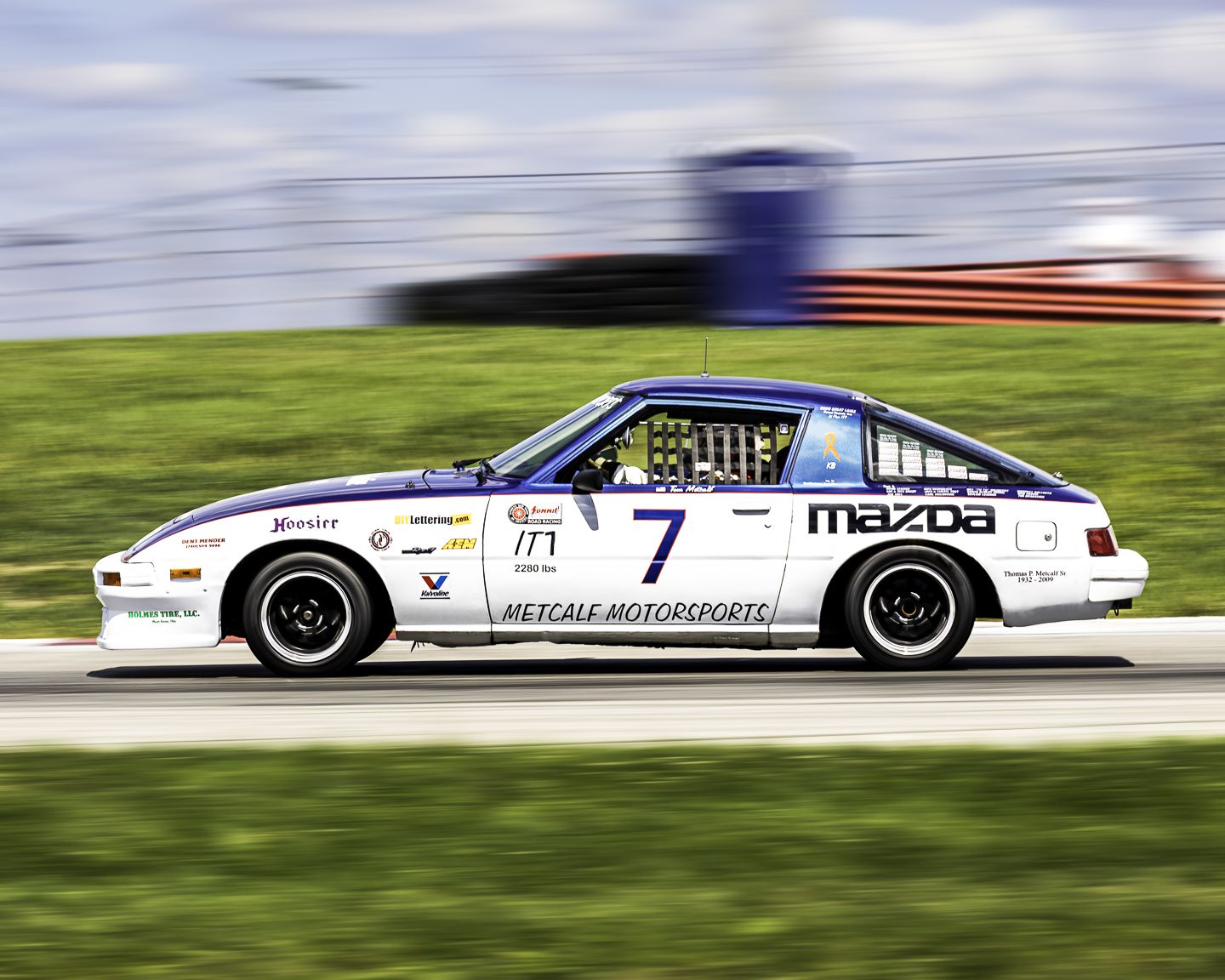
2. **1979–1985 Mazda RX-7**Steering away from conventional piston power, the first-generation Mazda RX-7, produced from 1979 to 1985, emerges as a lean, clean, and utterly captivating rotary-powered coupe. Often overshadowed by its more aggressive and powerful later siblings, this initial RX-7 iteration offers a distinct and highly engaging driving proposition. Its design philosophy centered on lightness and agility, resulting in a car that is exceptionally tossable, eager to change direction, and provides a pure, unfiltered connection between driver and road.
At the heart of its unique appeal is the buzzing 12A rotary engine, an engineering marvel that, unlike conventional engines, thrives on high RPMs, delivering a characteristic mechanical song as it climbs through the rev range. This distinctive powerplant, coupled with the car’s balanced chassis, created a driving experience unlike anything else on the market. Furthermore, the styling of the first-gen RX-7 has aged remarkably gracefully; its clean, aerodynamic lines remain timeless and elegant, avoiding the often-dated aesthetics of many contemporaries. It’s a testament to thoughtful design that holds up decades later.
Why it’s worth it: For enthusiasts seeking a taste of vintage Japanese performance with genuine enthusiast credibility, the first-gen RX-7 presents an exceptional opportunity. With prices currently hovering around the $10,000–$18,000 mark, it represents one of the most affordable pathways into owning a piece of automotive history that boasts both rising collector interest and a truly distinctive powertrain. It’s a classic that continually punches above its weight in terms of driving enjoyment and long-term potential.
Car Model Information: 1986 Mazda RX-7 GXL 2D Coupe
Name: Mazda RX-7
Caption: 1994 Mazda RX-7 R2 (FD3S)
Manufacturer: Mazda
Aka: Mazda Savanna RX-7 (Japan, 1978–1991),Mazda ɛ̃fini RX-7 (Japan, 1991–1997)
Class: Sports car
Production: 1978–2002,811,634 produced
Assembly: Hiroshima
Platform: Mazda F platform
Layout: Front-engine, rear-wheel-drive layout#Front mid-engine, rear-wheel-drive layout
Predecessor: Mazda RX-3
Successor: Mazda RX-8
Categories: 1980s cars, 1990s cars, 2000s cars, 24 Hours of Le Mans race cars, All articles needing additional references
Summary: The Mazda RX-7 is a front mid engine, rear-wheel-drive, rotary engine-powered sports car, manufactured and marketed by Mazda from 1978 through 2002 across three generations, all of which incorporated the use of a compact, lightweight Wankel rotary engine.
The first-generation RX-7, codenamed SA (early) and FB (late), is a two-seater two-door hatchback coupé. It featured a 12A carbureted rotary engine as well as the option for a 13B rotary engine with electronic fuel injection in later years. The second-generation RX-7, carrying the internal model code FC, was offered as a two-seater coupé with a 2+2 option available in some markets, as well as in a convertible body style. This was powered by the 13B rotary engine, offered in naturally aspirated or turbocharged forms. The third-generation RX-7, model code FD, was offered as a two-seater coupé with a 2+2 version offered as an option for the Japanese market. It featured a sequentially turbocharged 13B REW engine.
More than 800,000 RX-7s were manufactured over its lifetime.
Get more information about: Mazda RX-7
Buying a high-performing used car >>>
Brand: Mazda Model: RX-7
Price: $13,991 Mileage: 52,352 mi.
Read more about: A Car Expert’s Deep Dive: 12 Classic Cars That Offer Exceptional Value and Investment Potential
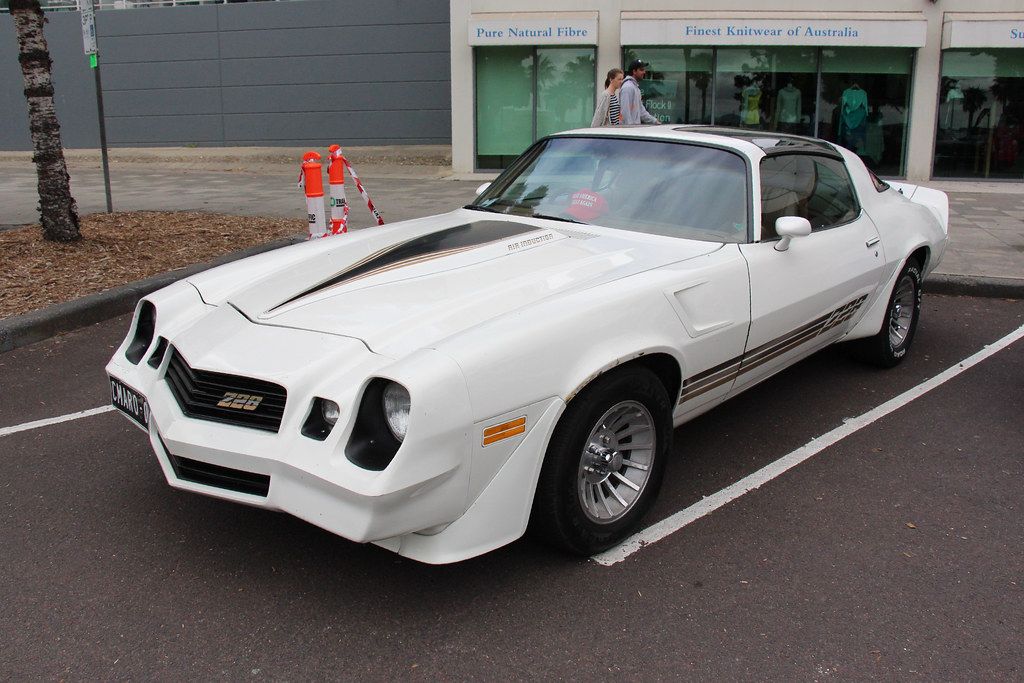
3. **1977–1981 Chevrolet Camaro**For those whose automotive palette leans towards the quintessential late-1970s General Motors muscle car aesthetic, but perhaps without the specific allure of a Corvette C3, the Chevrolet Camaro from 1977 to 1981 stands as an undeniable contender. This era of Camaro, particularly in its Z28 guise, channels an unapologetic attitude that remains deeply ingrained in American pop culture, instantly conjuring images of classic films and a bygone era of raw, accessible performance.
Picture the original Bumblebee from Transformers, the one Sam Witwicky acquires for a mere $4,000 from a less-than-reputable used car lot—that’s the precise vibe these Camaros encapsulate. They boast loud, distinctive graphics, aggressively scooped hoods, and the unmistakable rumble of a V8 engine, all contributing to a presence that hints at leaving a definitive mark on the asphalt. While emissions regulations of the period did temper horsepower and torque figures, the visual impact and sheer attitude of these cars remained fully intact. Crucially, GM’s vast and reliable parts support ensures that this is one of the easiest vintage muscle coupes to own, drive, and genuinely enjoy without the typical headaches often associated with older vehicles.
Why it’s worth it: The 1977–1981 Chevrolet Camaro offers a robust, budget-friendly slice of late-’70s cool, brimming with authentic V8 swagger. It is visually iconic, surprisingly manageable for daily enjoyment, and for now, still operates somewhat under the radar in the collector market. As the adage goes, “it seemed to work out just fine for Sam Witwicky,” implying that a smart buy today can lead to significant satisfaction and value down the road for the discerning collector.
Car Model Information: 2023 Chevrolet Camaro 1LS
Name: Chevrolet Camaro
Manufacturer: Chevrolet
Production: 1966–2002,2009–2023
ModelYears: 1967–2002,2010–2024
Class: Pony car
BodyStyle: coupe,convertible
Platform: GM F platform,GM Zeta platform,GM Alpha platform
Layout: Front-engine, rear-wheel-drive layout
Categories: 1970s cars, 1980s cars, 1990s cars, 2+2 coupés, 2000s cars
Summary: The Chevrolet Camaro is a mid-size American automobile manufactured by Chevrolet, classified as a pony car. It first went on sale on September 29, 1966, for the 1967 model year and was designed to compete with the Ford Mustang. The Camaro shared its platform and major components with the Firebird, produced by General Motors’ Pontiac division that was also introduced for the 1967 model year.
Four distinct generations of the Camaro were developed before production ended in 2002. The nameplate was revived on a concept car that evolved into the fifth-generation Camaro; production started on March 16, 2009.
Production of the sixth generation of the Camaro ended in December 2023, for the 2024 model year.
Get more information about: Chevrolet Camaro
Buying a high-performing used car >>>
Brand: Chevrolet Model: Camaro
Price: $24,565 Mileage: 36,667 mi.
Read more about: A Car Expert’s Deep Dive: 12 Classic Cars That Offer Exceptional Value and Investment Potential
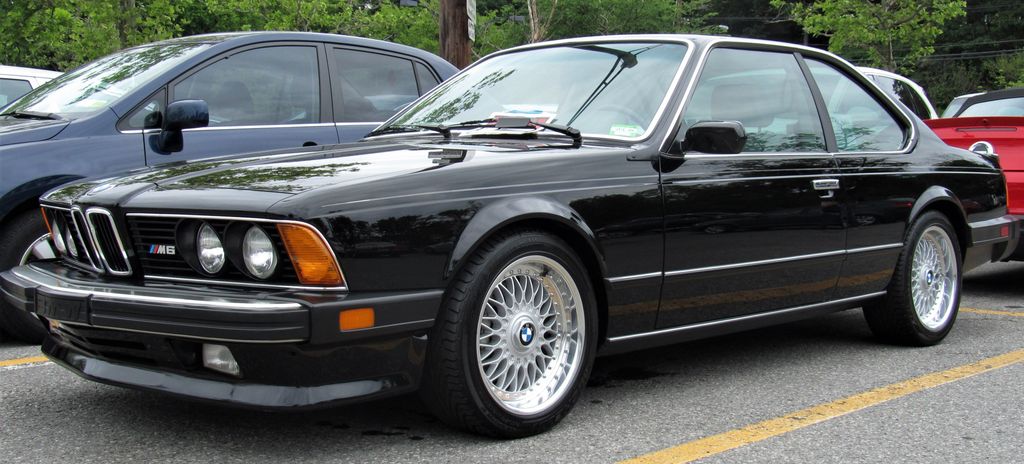
4. **1987 BMW M6**Behold the 1987 BMW M6, affectionately known by enthusiasts as the “shark-nosed” M6 (E24 chassis). This isn’t merely a grand tourer; it’s a statement piece, a vehicle that possesses both an authoritative visual presence and, more critically, the performance to back it up. Beneath its long, elegantly sculpted hood lies a mechanical masterpiece that defines its pedigree: the legendary M88/3 inline-six engine. This engine is not just any powerplant; it’s a direct evolutionary descendant of the very unit that propelled the iconic BMW M1 supercar, an automotive legend in its own right.
The M88/3 engine is renowned for its eagerness to sing, delivering a distinctive, metallic wail as the RPMs climb through its operating range, a sound that is pure, unadulterated M-division symphony. The exterior styling of the E24 M6 remains aggressively elegant, a timeless design that seamlessly blends sophistication with an undeniable hint of sporting menace. Inside, the cabin is a shrine to analog luxury, free from the distractions of modern touchscreens, instead featuring a meticulously arranged dashboard with gauges that communicate every vital function directly to the driver. This car offers an immersive, driver-focused experience that is increasingly rare in contemporary vehicles.
Why it’s worth it: Acquiring a 1987 BMW M6 for under $40,000 means you’re not simply purchasing a car; you’re investing in a foundational piece of BMW’s “M” legacy. It’s a vehicle infused with supercar bloodlines, wrapped in a sleek, four-seat coupe body that drives as remarkably as it looks. Furthermore, the M88/3 engine is surprisingly robust and reliable if maintained correctly, underscoring the peak of BMW’s “ultimate driving machine” ethos from an era celebrated for its exceptional build quality and engineering integrity. This model presents genuine collector upside, making it a truly astute acquisition.
Car Model Information: 2008 BMW M6 Base
Name: BMW M6
Manufacturer: BMW M
Layout: Front-engine, rear-wheel-drive
Production: 1983–1989,2005–2019
Assembly: BMW Group Plant Dingolfing
Related: BMW 6 Series,BMW M5
Class: Grand tourer
Successor: BMW M8
Categories: 1980s cars, 2000s cars, 2010s cars, Articles with short description, BMW vehicles
Summary: The BMW M6 is a high-performance version of the 6 Series marketed under the BMW M sub-brand from 1983 to 2019 (with a hiatus from 1990 to 2004).
Introduced in the coupe body style, the M6 was also built in convertible and fastback sedan (‘Gran Coupe’) body styles for later generations. An M6 model was built for each of the first three generations of the 6 Series. Production of the M6 ended in 2019 and it was replaced by the BMW M8 (F91/F92/F93) in 2019.
Get more information about: BMW M6
Buying a high-performing used car >>>
Brand: BMW Model: M6
Price: $25,713 Mileage: 56,527 mi.
Read more about: The Engines of Legend: How Iconic Vehicles Drive Cinematic Narratives and Automotive Innovation
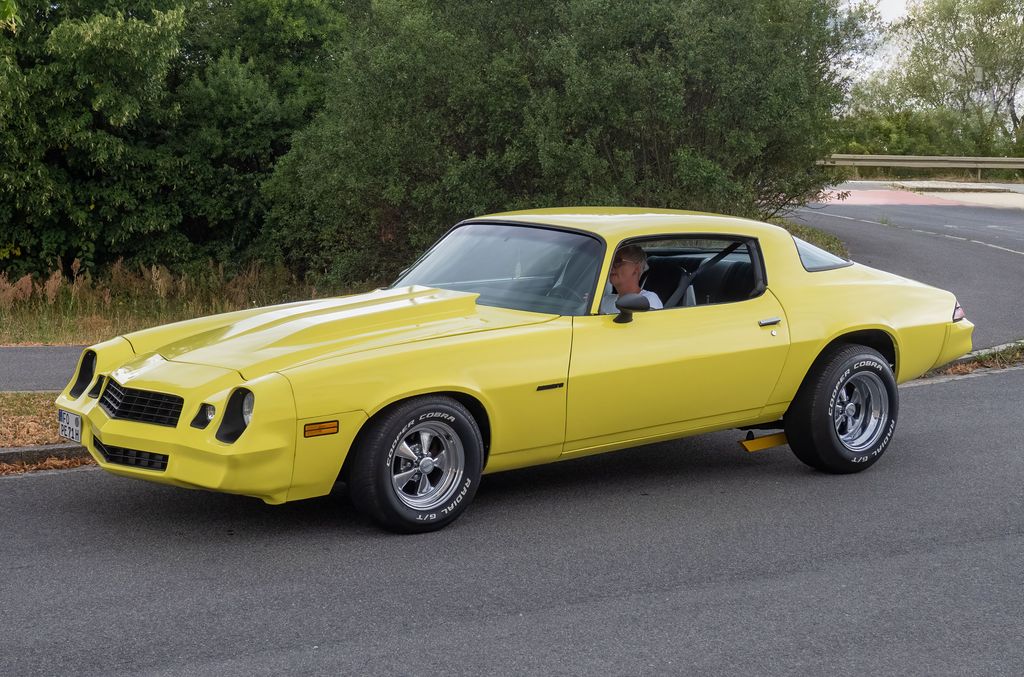
5. **1970–1981 Pontiac Firebird Trans Am**Loud, unashamedly brash, and exuding an aura that suggests it could effortlessly win a bar fight (and quite possibly did during its raucous 1970s heyday)—welcome to the glorious world of the Pontiac Firebird Trans Am. Whether you choose to fully embrace the “Smokey and the Bandit” aesthetic with T-tops and the iconic screaming chicken decal emblazoned on the hood, or opt for a slightly more subdued color scheme, these second-generation muscle cars are designed to deliver raw, unadulterated V8 performance coupled with an unparalleled road presence that commands attention wherever it goes.
In recent years, the market values for these machines have experienced a significant surge, particularly for highly desirable models such as those equipped with the WS6 performance package or boasting the more potent 400 or 455-cubic-inch engines. This appreciation reflects a growing recognition of their cultural significance and their embodiment of a distinct era in American automotive history. A major advantage for potential owners is General Motors’ notoriously vast and accessible parts support network, which makes the upkeep of a Trans Am surprisingly reasonable, especially when contrasted with the often-finicky and expensive maintenance demands of many European exotics. Currently, the average cost hovers around $50,000, though exceptional examples can fetch prices well into six figures.
Why it’s worth it: The Pontiac Firebird Trans Am is the quintessential embodiment of classic American muscle, offering appreciating value and an abundance of T-top, “bandit run” attitude that is hard to match. It serves as an instant hit of nostalgia, resonating deeply across generations; from seasoned veterans to wide-eyed youngsters, nearly everyone instantly recognizes and appreciates its iconic status and raw appeal.
Car Model Information: 2024 RAM 1500 Laramie
Name: Pontiac Firebird
Caption: The second, third, and fourth generations of,the Pontiac Firebird Trans Am
Manufacturer: Pontiac (automobile)
Production: February 23, 1967 – August 30, 2002
ModelYears: 1967 – 2002
Class: Pony car,Muscle car
Platform: GM F platform
Related: Chevrolet Camaro
Layout: Front engine, rear-wheel-drive layout
Categories: 1970s cars, 1980s cars, 1990s cars, 2000s cars, All articles with dead external links
Summary: The Pontiac Firebird is an American automobile built and produced by Pontiac from the 1967 to 2002 model years. Designed as a pony car to compete with the Ford Mustang, it was introduced on February 23, 1967, five months after GM’s Chevrolet division’s platform-sharing Camaro. This also coincided with the release of the 1967 Mercury Cougar, Ford’s upscale, platform-sharing version of the Mustang.
The name “Firebird” was also previously used by GM for the General Motors Firebird series of concept cars in the 1950s.
Get more information about: Pontiac Firebird
Buying a high-performing used car >>>
Brand: Pontiac Model: Firebird Trans Am
Price: $37,798 Mileage: 34,409 mi.
Read more about: The 10 Unforgettable American Cars That Defined the Roaring ’90s Automotive Scene
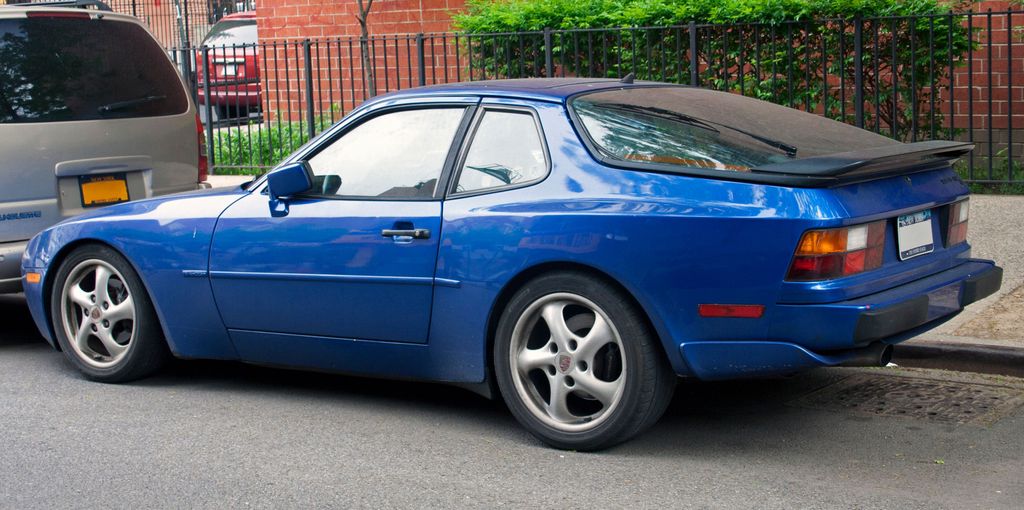
6. **1984–1991 Porsche 944 Turbo**While the venerable Porsche 911s consistently capture headlines and achieve stratospheric auction prices, the 1984–1991 Porsche 944 Turbo stands out as a genuine connoisseur’s choice—a truly thinking person’s Porsche. This front-engined transaxle marvel offers an array of compelling attributes that often get overlooked in the shadow of its rear-engined sibling. Chief among these is its near-perfect 50:50 weight distribution, a direct result of its sophisticated transaxle layout, which places the transmission at the rear. This balance contributes immensely to its surgical precision in the corners, allowing drivers to carve apexes with a confidence and accuracy that rivals far more expensive machinery.
Under the hood, a turbocharged engine delivers a potent punch, capable of firmly shoving occupants into their seats with exhilarating force. The driving experience is not just about raw speed, however; it’s about the nuanced feedback, the direct steering, and the overall composure of a chassis engineered for performance. Its styling, often described as understated yet elegant, is aging beautifully, resisting the dated appearance that plagues many cars of its era. Crucially, prices for the 944 Turbo, though steadily climbing, remain remarkably reasonable for a Porsche of this caliber. At just $28,000, it presents itself as an extraordinary performance bargain, capable of delivering immense driving smiles without concurrently draining one’s savings account.
Why it’s worth it: The Porsche 944 Turbo is arguably one of the best-kept secrets within the vast Porsche world, offering authentic, engaging driving thrills, genuine track capability, and a collector upside that is only just beginning to be fully recognized. It serves as compelling proof that front-engined Porsches can indeed be profoundly special, offering a unique blend of heritage, performance, and financial sensibility that makes it an exceptional acquisition for the informed enthusiast.
Car Model Information: 2024 RAM 1500 Laramie
Caption: 1986 944 Turbo (951) US-spec
Name: Porsche 944
Manufacturer: Porsche AG
Class: Sports car
Production: 1982–1991
Layout: Front-engine, rear-wheel-drive layout
Assembly: Neckarsulm,Stuttgart
Designer: Harm Lagaay
Predecessor: Porsche 924
Successor: Porsche 968
BodyStyle: coupé,convertible
Engine: Straight-four engine,Turbocharger,2.7 L M44/12 I4,3.0 L M44/41 I4
Wheelbase: 2400 mm
Abbr: on
Length: 1986–1988: {{convert,4318,mm,in,1,abbr=on
Width: 1735 mm
Height: 1275 mm
Transmission: Automatic transmission,Manual transmission
Weight: Pre-1988: {{convert,1180,kg,lb,0,abbr=on
Categories: 1990s cars, All articles needing additional references, All articles with unsourced statements, Articles needing additional references from September 2024, Articles with short description
Summary: The Porsche 944 is a sports car manufactured by German automobile manufacturer Porsche from 1982 until 1991. A front-engine, rear-wheel drive mid-level model based on the 924 platform, the 944 was available in coupé or cabriolet body styles, with either naturally aspirated or turbocharged engines. With over 163,000 cars produced, the 944 was the most successful sports car in Porsche’s history until the introductions of the Boxster and 997 Carrera.
Extensive design revisions for the 1992 model year prompted Porsche to drop the 944 nameplate and rebrand the vehicle as the 968.
Get more information about: Porsche 944
Buying a high-performing used car >>>
Brand: Porsche Model: 944 Turbo
Price: $37,798 Mileage: 34,409 mi.
Read more about: A Car Expert’s Deep Dive: 12 Classic Cars That Offer Exceptional Value and Investment Potential
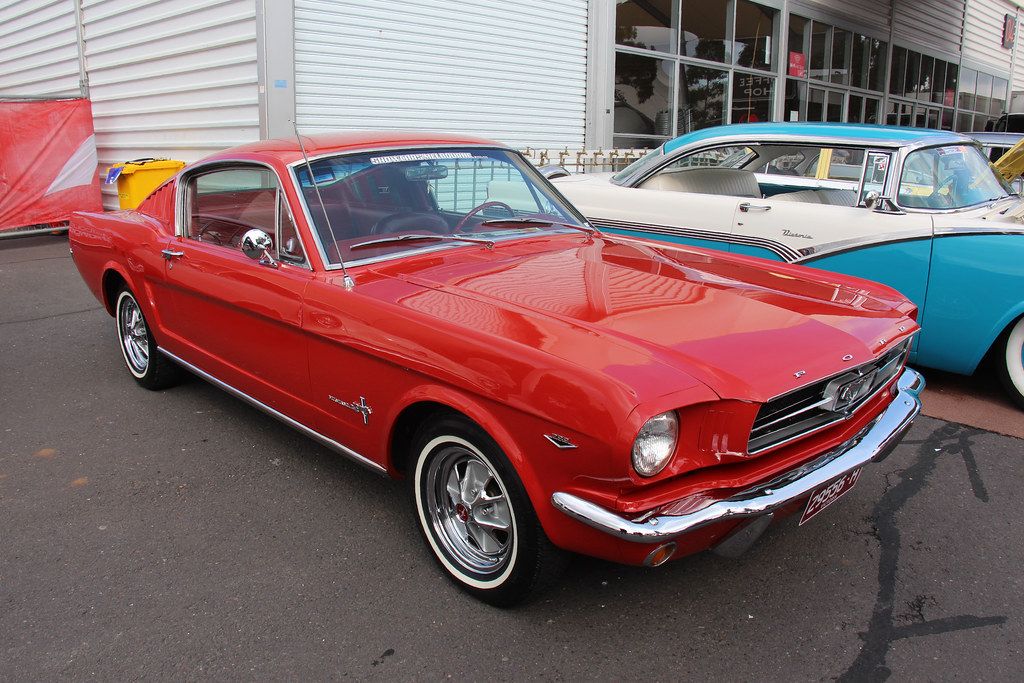
7. **1965–1970 Ford Mustang (First Generation)**The original Ford Mustang is more than just a car; it’s a bona fide piece of rolling Americana, a cultural phenomenon that democratized style and muscle for the masses. Its introduction launched the “pony car” segment, making sporty, aspirational motoring accessible to a wider audience. Decades later, it remains one of the most approachable, beloved, and endlessly customizable classics, captivating enthusiasts with its timeless appeal.
Between the sleek coupes, the cruising convertibles, and the iconic fastbacks, there’s a configuration (and a budget) for nearly every enthusiast. These classic muscle cars with significant cultural cachet can be acquired for about $40,000, representing a smart investment. Crucially, a deep and expansive aftermarket parts industry means one could practically build an entirely new Mustang from scratch, making ownership and personalization surprisingly easy.
Why it’s worth it: This classic is incredibly easy to own and endlessly fun to drive, consistently earning an approving nod from every generation. It serves as the ultimate canvas for customization or a perfect bone-stock cruiser, contributing to its steadily appreciating value. The Mustang’s enduring popularity, coupled with readily available parts, solidifies its position as a rewarding addition to any collection, driven by genuine and rising market demand.
Car Model Information: 2024 Ford Mustang GT
Name: Ford Mustang
Caption: 2018 Ford Mustang GT 5.0
Aka: Ford T5 (Germany)
Manufacturer: Ford Motor Company
Production: March 1964 – present
ModelYears: 1965–present
Class: Unbulleted list
BodyStyle: Unbulleted list
Layout: Front-engine, rear-wheel-drive layout
Categories: 1970s cars, 1980s cars, 1990s cars, 2+2 coupés, 2000s cars
Summary: The Ford Mustang is a series of American automobiles manufactured by Ford. In continuous production since 1964, the Mustang is currently the longest-produced Ford car nameplate. Currently in its seventh generation, it is the fifth-best selling Ford car nameplate. The namesake of the “pony car” automobile segment, the Mustang was developed as a highly styled line of sporty coupes and convertibles derived from existing model lines, initially distinguished by “long hood, short deck” proportions.
Originally predicted to sell 100,000 vehicles yearly, the 1965 Mustang became the most successful vehicle launch since the 1927 Model A. Introduced on April 17, 1964 (16 days after the Plymouth Barracuda), over 400,000 units were sold in its first year; the one-millionth Mustang was sold within two years of its launch. In August 2018, Ford produced the 10-millionth Mustang; matching the first 1965 Mustang, the vehicle was a 2019 Wimbledon White convertible with a V8 engine.
The success of the Mustang launch led to multiple competitors from other American manufacturers, including the Chevrolet Camaro and Pontiac Firebird (1967), AMC Javelin (1968), and Dodge Challenger (1970). It also competed with the Plymouth Barracuda, which was launched around the same time. The Mustang also had an effect on designs of coupes worldwide, leading to the marketing of the Toyota Celica and Ford Capri in the United States (the latter, by Lincoln-Mercury). The Mercury Cougar was launched in 1967 as a unique-bodied higher-trim alternative to the Mustang; during the 1970s, it included more features and was marketed as a personal luxury car.
From 1965 until 2004, the Mustang shared chassis commonality with other Ford model lines, staying rear-wheel-drive throughout its production. From 1965 to 1973, the Mustang was derived from the 1960 Ford Falcon compact. From 1974 until 1978, the Mustang (denoted Mustang II) was a longer-wheelbase version of the Ford Pinto. From 1979 until 2004, the Mustang shared its Fox platform chassis with 14 other Ford vehicles (becoming the final one to use the Fox architecture). Since 2005, Ford has produced two generations of the Mustang, each using a distinct platform unique to the model line.
Through its production, multiple nameplates have been associated with the Ford Mustang series, including GT, Mach 1, Boss 302/429, Cobra (separate from Shelby Cobra), and Bullitt, along with “5.0” fender badging (denoting 4.9 L OHV or 5.0 L DOHC V8 engines).
Get more information about: Ford Mustang
Buying a high-performing used car >>>
Brand: Ford Model: Mustang
Price: $37,565 Mileage: 37,293 mi.
Read more about: A Car Expert’s Deep Dive: 12 Classic Cars That Offer Exceptional Value and Investment Potential
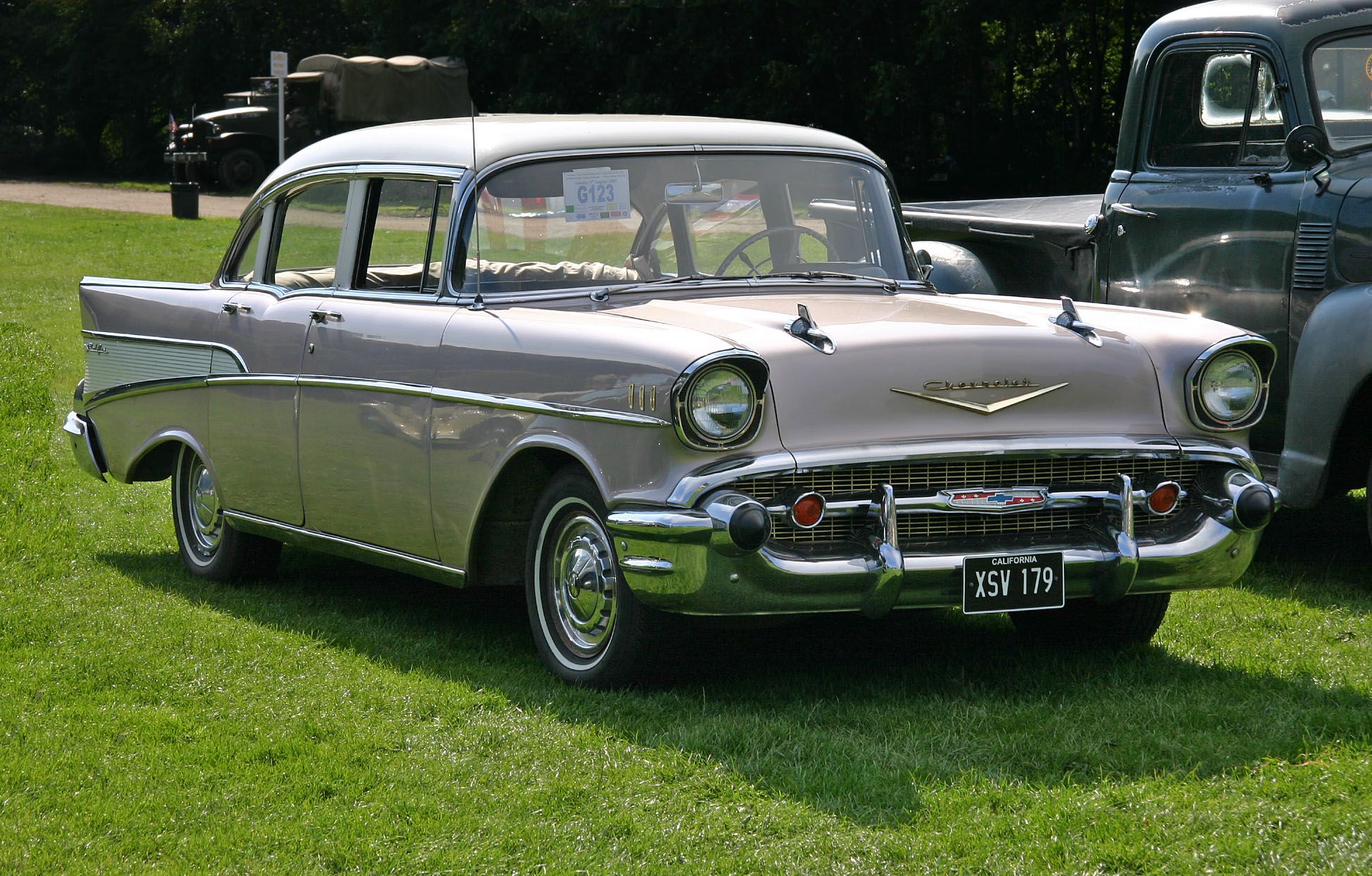
8. **1957 Chevrolet Bel Air**When discussing genuine Americana, the 1957 Chevrolet Bel Air emerges as the undisputed rock star of the Tri-Five era. This finned, chrome-draped icon perfectly embodies American postwar optimism and boundless energy, standing as a vivid symbol of its time. Its signature two-tone paint schemes, glorious gold badges, and panoramic wraparound windshield collectively act as an instant time machine, transporting you back to a simpler era of soda fountains and drive-in movies.
Whether discovered as a bone-stock beauty or transformed into a restomodded monster, the Bel Air invariably draws a crowd and remarkably holds its value like a blue-chip stock within a diversified portfolio. Acquiring a piece of the 1950s’ rebellious spirit for around $45,000 represents a compelling opportunity for collectors. This model also boasts a memorable cinematic history, famously featuring in an epic chase scene in “Thunder and Lightning,” where it spectacularly flew down a bridge on its right side, further cementing its legendary status.
Why it’s worth it: The 1957 Bel Air is the very embodiment of the American dream on wheels, possessing styling, cultural cachet, and a level of collectability that genuinely never goes out of fashion. Its iconic status ensures it’s a guaranteed conversation starter at any car show, gas station, or enthusiast gathering. With its undeniable historical significance and robust market performance, this classic offers both an engaging ownership experience and a strong investment prospect for those seeking a tangible connection to automotive history.
Car Model Information: 2024 RAM 1500 Laramie
Name: Chevrolet Bel Air
Caption: 1957 Chevrolet Bel Air convertible
Manufacturer: Chevrolet
Production: 1949–1980
ModelYears: 1950–1981
Class: Full-size
Layout: FR layout
Predecessor: Chevrolet Fleetline,Chevrolet Biscayne
Successor: Chevrolet Impala
Categories: 1950s cars, 1960s cars, 1970s cars, 1980s cars, Articles with short description
Summary: The Chevrolet Bel Air is a full-size car produced by Chevrolet for the 1950–1981 model years. Initially, only the two-door hardtops in the Chevrolet model range were designated with the Bel Air name from 1950 to 1952. With the 1953 model year, the Bel Air name was changed from a designation for a unique body shape to a premium level of trim applied across a number of body styles. The Bel Air continued with various other trim level designations, and it had gone from a mid-level trim car to a budget fleet sedan when U.S. production ceased in 1975. Production continued in Canada, for its home market only, through the 1981 model year.
Get more information about: Chevrolet Bel Air
Buying a high-performing used car >>>
Brand: Chevrolet Model: Bel Air
Price: $37,798 Mileage: 34,409 mi.
Read more about: Nostalgia on Wheels: 15 Classic Station Wagons From the Golden Age of Family Cars
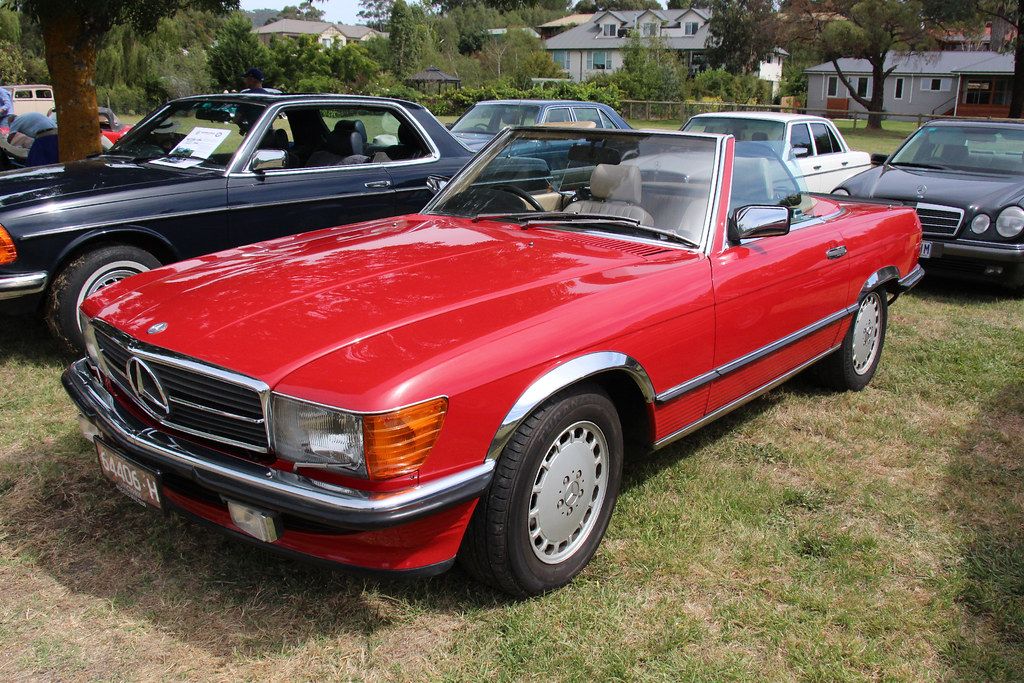
9. **1981–1989 Mercedes-Benz 560SL (R107)**For those seeking classic sophistication infused with undeniable German engineering prowess, the Mercedes-Benz 560SL from the R107 chassis stands as an exemplary choice. This V8-powered convertible exudes a sense of being carved from a single block of granite—smooth, immensely solid, and utterly dependable in its construction and performance. While its driving experience leans more towards a stately cruiser than a frantic canyon carver, this refined character is precisely what constitutes its enduring charm and appeal.
The 560SL is ideally suited for a leisurely Sunday drive to the country club, yet it remains equally capable of a spirited blast down the coast, offering versatility for varied motoring pleasures. With an average cost of just $32,000, it presents a remarkably accessible entry point into high-end classic European motoring. Furthermore, these vehicles are relatively easy to maintain, boasting good parts availability—a testament to Mercedes-Benz engineering, offering a simpler ownership experience compared to the intricate demands of many modern luxury automobiles.
Why it’s worth it: This model represents a timeless Mercedes design, seamlessly blending luxury, unflappable reliability, and a steadily growing presence in collector demand. It achieves the perfect harmony of classy open-air motoring without the prohibitive complexity or astronomical prices often associated with more contemporary luxury barges. For the informed enthusiast, the 560SL offers a compelling mix of heritage, driving pleasure, and investment potential, making it a genuinely smart acquisition that continues to appreciate.
Read more about: A Car Expert’s Deep Dive: 12 Classic Cars That Offer Exceptional Value and Investment Potential
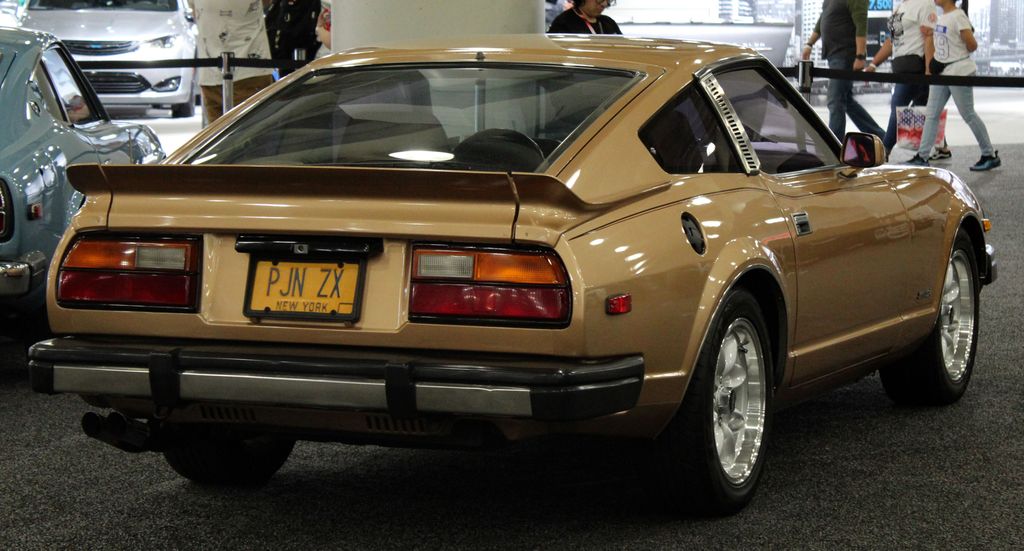
10. **1978–1983 Datsun 280ZX**Often overshadowed by its earlier, purer siblings like the 240Z and 260Z, the Datsun 280ZX is truly the dark horse of the iconic Z-car family. It offered a more refined and comfortable experience than the original, while still maintaining that signature long-hood, short-deck coupe feel that defined the breed. This balance made it a unique proposition in its time.
Now, the 280ZX is finally earning its long-overdue respect, evidenced by steadily rising values, with turbo models now exceeding $20,000. This surge is propelled by a rabid and growing fan base, particularly as 1970s and 1980s JDM cars gain significant momentum among collectors. Its styling, a captivating blend of sleek sports car and late-‘70s futurism, remains undeniably cool and distinctive.
Why it’s worth it: It offers genuine vintage Japanese charm and that coveted Z-car heritage, alongside a driving experience that remains thoroughly engaging. All this is available at a price currently far more reasonable than its older brothers, a situation unlikely to last. For enthusiasts seeking a compelling blend of style, performance, and investment potential in JDM history, the 280ZX is a smart acquisition—get in while you can.
Car Model Information: 1980 Datsun 280ZX 10TH ANNIVERSARY
Name: Nissan S130
Aka: Datsun 280ZX,Nissan Fairlady Z
Caption: 1982 Datsun 280ZX 2+2 (Europe)
Class: Sports car
Manufacturer: Nissan
BodyStyle: fastback
Production: June 1978–1983
Layout: Front-engine, rear-wheel-drive layout
Assembly: ubl
Engine: Nissan L engine#L20,Straight-six engine
Transmission: Borg-Warner,Borg-Warner T-5 transmission
Predecessor: Nissan Fairlady Z (S30)
Successor: Nissan 300ZX#Z31
Weight: 1281 kg
Abbr: on 2+2
Wheelbase: 2320 mm
Length: 4420 mm
Width: 1690 mm
Height: 1295 mm
Categories: 1980s cars, All articles needing additional references, All articles with unsourced statements, Articles needing additional references from May 2018, Articles with short description
Summary: The Nissan S130 is a sports coupé produced by Nissan in Japan from 1978 until 1983. It was sold as the Datsun 280ZX, Nissan Fairlady Z and Nissan Fairlady 280Z, depending on the market. In Japan, it was exclusive to Nissan Bluebird Store locations. It was the second generation Z-car, replacing the Nissan Fairlady Z (S30) in late 1978. The 280ZX was the first time the “by Nissan” subscript was badged alongside the Datsun logo, along with Nissan trucks. The 280ZX was Motor Trend’s import car of the year for 1979. The 280ZX was replaced by the Nissan 300ZX in 1984.
Get more information about: Nissan Fairlady Z (S130)
Buying a high-performing used car >>>
Brand: Datsun Model: 280ZX
Price: $69,980 Mileage: 17,351 mi.
Read more about: A Car Expert’s Deep Dive: 12 Classic Cars That Offer Exceptional Value and Investment Potential
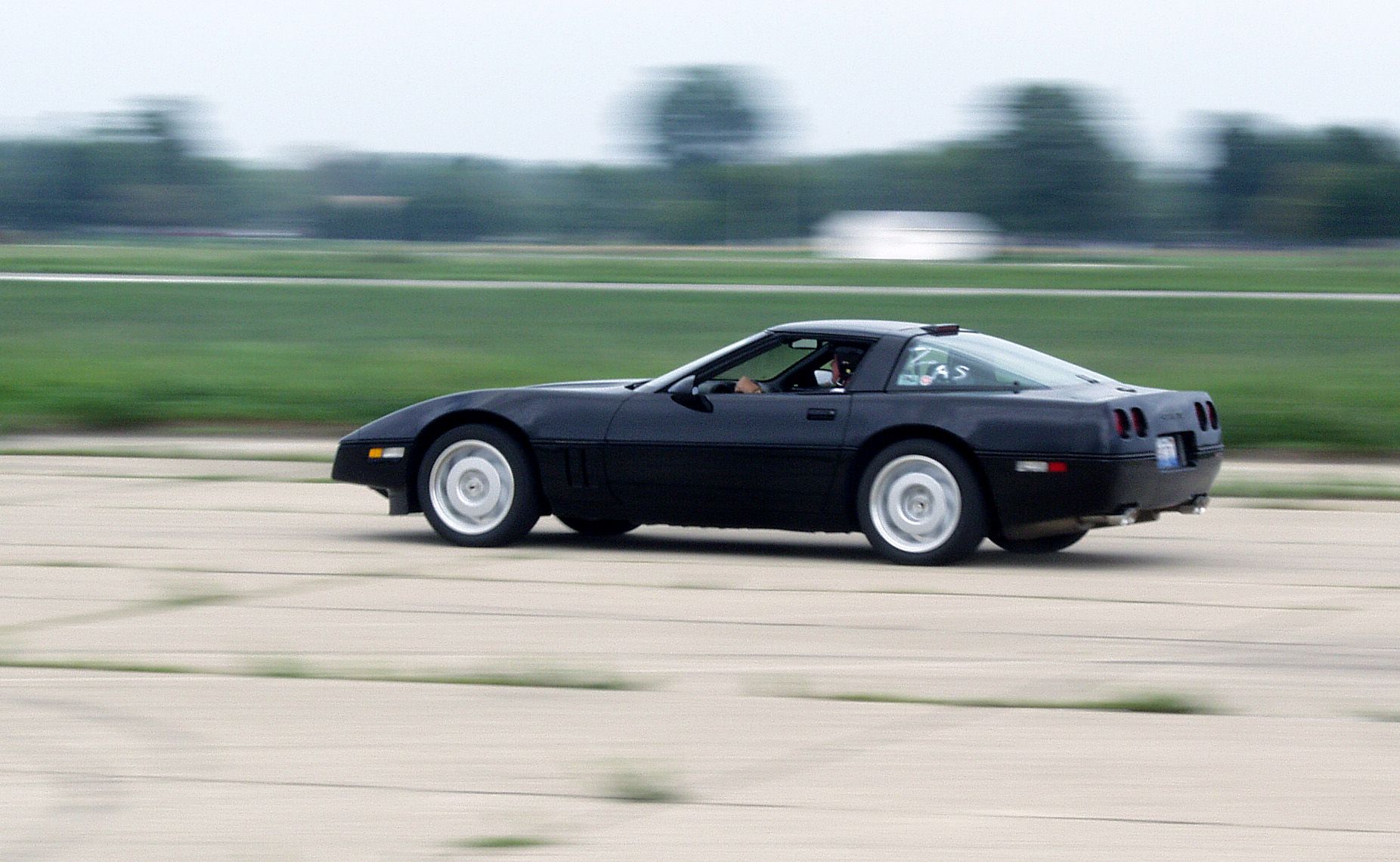
11. **1990–1996 Chevrolet Corvette C4 ZR-1**The Chevrolet Corvette C4 ZR-1 represents GM’s audacious moonshot, a true supercar born from American grit and international collaboration. Powering this beast was the formidable Lotus-engineered, Mercury Marine-built LT5 V8 engine—a glorious 32-valve, quad-cam marvel. This revolutionary powerplant initially delivered an astonishing 375 horsepower (later 405 hp), capable of humiliating many contemporary exotics in its heyday.
Though its distinctive digital dash and sharp wedge shape scream the 1990s, the ZR-1’s performance remains genuinely impressive, even by today’s standards. Its inherent rarity, with just over 6,900 units produced, coupled with its undisputed racing pedigree, is now drawing serious attention from collectors. Available for $34,000 to $44,000, this Corvette is still a formidable weapon on the track and makes an undeniable statement on the street.
Why it’s worth it: The C4 ZR-1 is a genuine supercar sleeper, offering incredible bang for your buck in terms of performance and exclusivity, while still being remarkably attainable. However, its increasing recognition in the collector market strongly suggests it won’t remain “attainable” for much longer. For those seeking an American legend with supercar DNA and significant appreciation potential, the ZR-1 presents a compelling opportunity.
Car Model Information: 2023 Chevrolet Corvette 3LZ
Name: Chevrolet Corvette
Caption: 2021 Chevrolet Corvette C8
Manufacturer: Chevrolet
Production: 1953–present
ModelYears: bulleted list
Assembly: bulleted list
Class: Sports car
BodyStyle: coupé
Layout: Front-engine, rear-wheel-drive layout,Rear mid-engine, rear-wheel-drive layout
Categories: 1950s cars, 1960s cars, 1970s cars, 1980s cars, 1990s cars
Summary: The Chevrolet Corvette is a line of American two-door, two-seater sports cars manufactured and marketed by General Motors under the Chevrolet marque since 1953. Throughout eight generations, indicated sequentially as C1 to C8, the Corvette is noted for its performance, distinctive styling, lightweight fiberglass or composite bodywork, and competitive pricing. The Corvette has had domestic mass-produced two-seater competitors fielded by American Motors, Ford, and Chrysler; it is the only one continuously produced by a United States auto manufacturer. It serves as Chevrolet’s halo car.
In 1953, GM executives accepted a suggestion by Myron Scott, then the assistant director of the Public Relations department, to name the company’s new sports car after the corvette, a small, maneuverable warship. Initially, a relatively modest, lightweight 6‑cylinder convertible, subsequent introductions of V8 engines, competitive chassis innovations, and rear mid-engined layout have gradually moved the Corvette upmarket into the supercar class. In 1963, the second generation was introduced in coupe and convertible styles. The first three Corvette generations (1953–1982) employed body-on-frame construction, and since the C4 generation, introduced in 1983 as an early 1984 model, Corvettes have used GM’s unibody Y‑body platform. All Corvettes used front mid-engine configuration for seven generations, through 2019, and transitioned to a rear mid-engined layout with the C8 generation.
Initially manufactured in Flint, Michigan, and St. Louis, Missouri, the Corvette has been produced in Bowling Green, Kentucky, since 1981, which is also the location of the National Corvette Museum. The Corvette has become widely known as “America’s Sports Car.” Automotive News wrote that after being featured in the early 1960s television show Route 66, “the Corvette became synonymous with freedom and adventure,” ultimately becoming both “the most successful concept car in history and the most popular sports car in history.”
Get more information about: Chevrolet Corvette
Buying a high-performing used car >>>
Brand: Chevrolet Model: Corvette
Price: Not Priced Mileage: 1,614 mi.
Read more about: A Car Expert’s Deep Dive: 12 Classic Cars That Offer Exceptional Value and Investment Potential
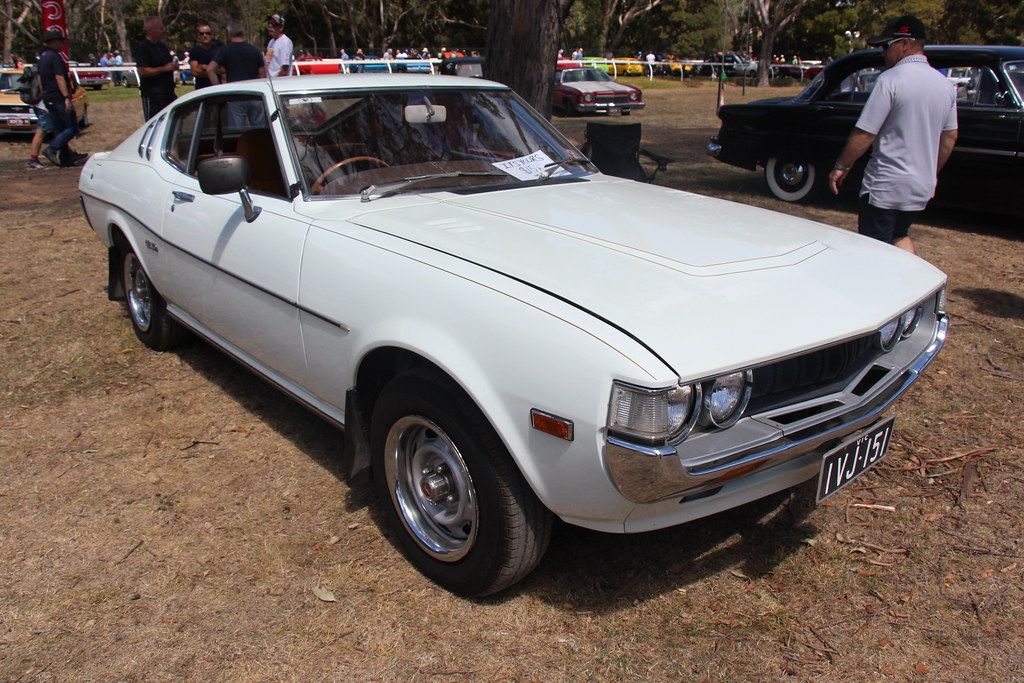
12. **1971–1977 Toyota Celica (First Generation)**Often nicknamed the “Japanese Mustang,” and for good reason, the early Toyota Celica brought stylish sports coupe flair and bulletproof reliability to the masses. This lightweight, robust, and surprisingly fun-to-drive vehicle offers a genuine classic car experience, crucially without the financial headaches often associated with some American counterparts. Its inherent dependability made it a standout choice for everyday enjoyment.
As interest in vintage JDM (Japanese Domestic Market) rides grows exponentially, first-generation Celicas are gaining significant traction among collectors and enthusiasts. They appreciate its clean, timeless lines and inherent toughness, with average costs ranging from $15,000 to $25,000. Those subtly flared rear arches, long hood, and chrome mirrors still combine to create an incredibly sharp and timeless design that enhances any driveway.
Why it’s worth it: This stylish, reliable, and mechanically simple classic is still genuinely affordable, yet its value is on a steady upward trajectory. This makes it a prime candidate for acquisition before it becomes the next highly sought-after, six-figure JDM hero. Its blend of aesthetic appeal, practicality, and rising market interest positions it as a truly intelligent purchase for the discerning collector.
If you love cars and you’ve worked hard, you don’t need an excuse to buy something cool. These classics deliver the experience, the look, the sound, and the feel without squandering the hard work and sacrifices that got you here.
Smart buys. Great drives. That’s the goal.
Car Model Information: 1988 Toyota Celica GT
Name: Toyota Celica
Caption: 1994 Toyota Celica GT-Four (ST205, UK)
Manufacturer: Toyota
Production: December 1970
ModelYears: 1971–2005
Assembly: Susono,Shizuoka Prefecture
Class: Sports car
BodyStyle: unbulleted list
Layout: unbulleted list
Categories: 1980s cars, 1990s cars, 2000s cars, Accuracy disputes from August 2020, All-wheel-drive vehicles
Summary: The Toyota Celica ( or ) (Japanese: トヨタ・セリカ, Hepburn: Toyota Serika) is an automobile produced by Toyota from 1970 until 2006. The Celica name derives from the Latin word coelica meaning heavenly or celestial. In Japan, the Celica was exclusive to Toyota Corolla Store dealer chain. Produced across seven generations, the Celica was powered by various four-cylinder engines, and body styles included convertibles, liftbacks, and notchback coupé.
In 1973, Toyota coined the term liftback to describe the Celica fastback hatchback, and the GT Liftback would be introduced for the 1976 model year in North America. Like the Ford Mustang, the Celica concept was to attach a coupe body to the chassis and mechanicals from a high volume sedan, in this case the Toyota Carina.
The first three generations of North American market Celicas were powered by variants of Toyota’s R series engine. In August 1985, the car’s drive layout was changed from rear-wheel drive to front-wheel drive, and all-wheel drive turbocharged models were manufactured from October 1986 to June 1999. Variable valve timing came in certain Japanese models starting from December 1997 and became standard in all models from the 2000 model year. In 1978, a restyled six-cylinder variant was introduced as the Celica Supra (Celica XX in Japan); it would be spun off in 1986 as a separate model, becoming simply the Supra. Lightly altered versions of the Celica were also sold through as the Corona Coupé through the Toyopet dealer network from 1985 to 1989, and as the Toyota Curren through the Vista network from 1994 to 1998.
Get more information about: Toyota Celica
Buying a high-performing used car >>>
Brand: Toyota Model: Celica
Price: $5,588 Mileage: 162,656 mi.
Read more about: A Car Expert’s Deep Dive: 12 Classic Cars That Offer Exceptional Value and Investment Potential
Let’s get one thing straight: we’re not knocking anyone’s dream car. If it moves your soul, it’s already valuable. This list is about the classics that deliver big smiles without requiring a second mortgage.


